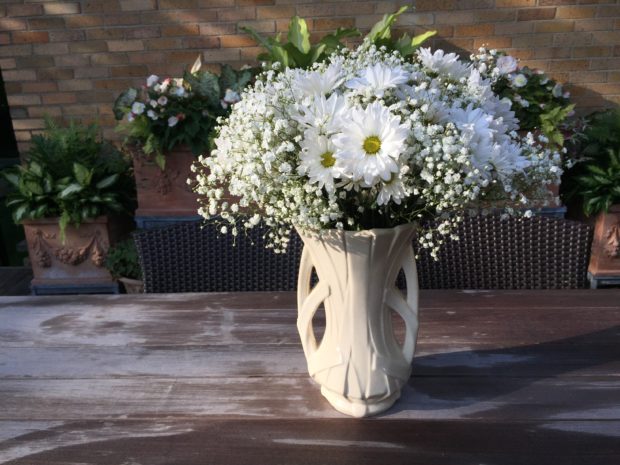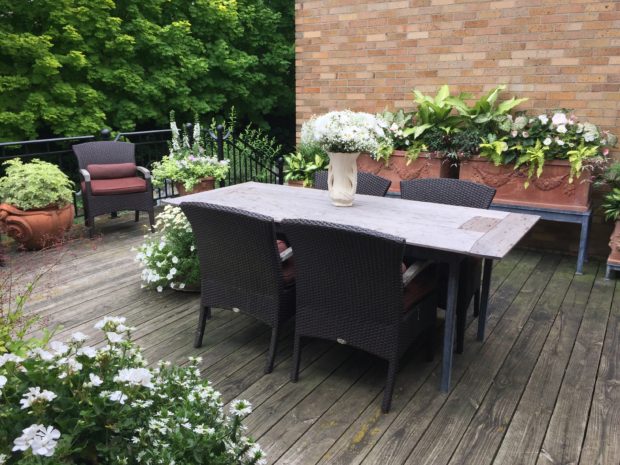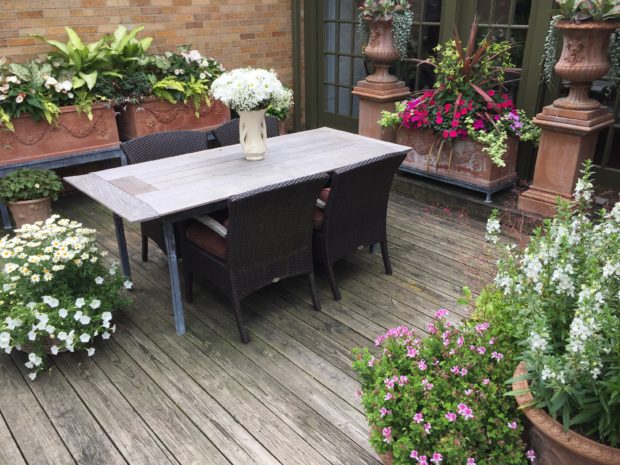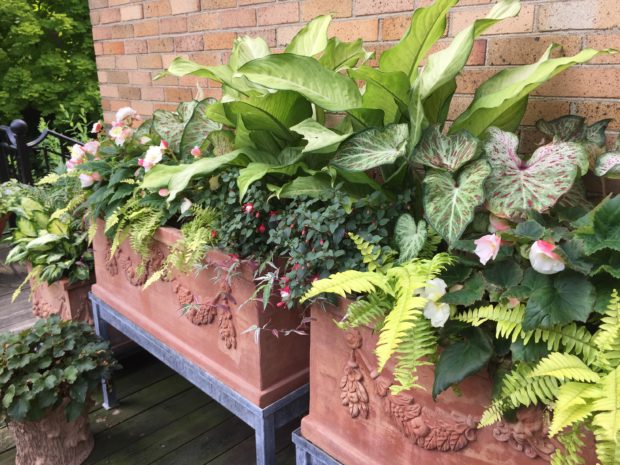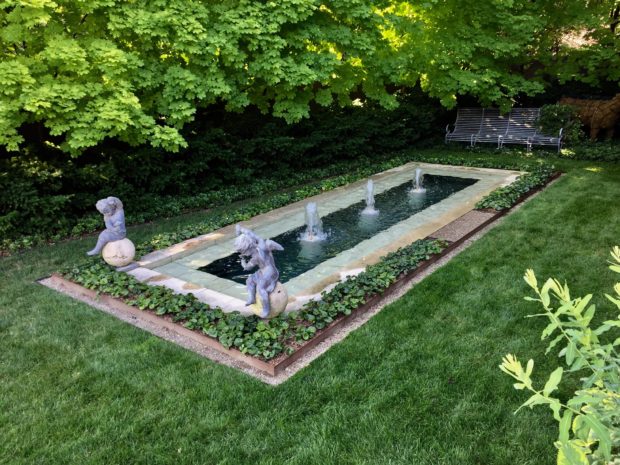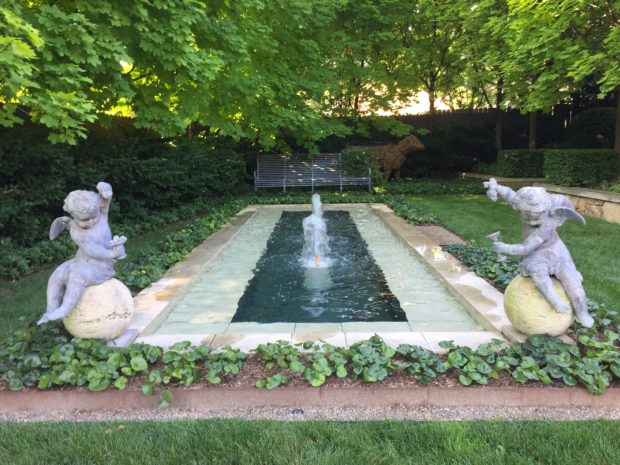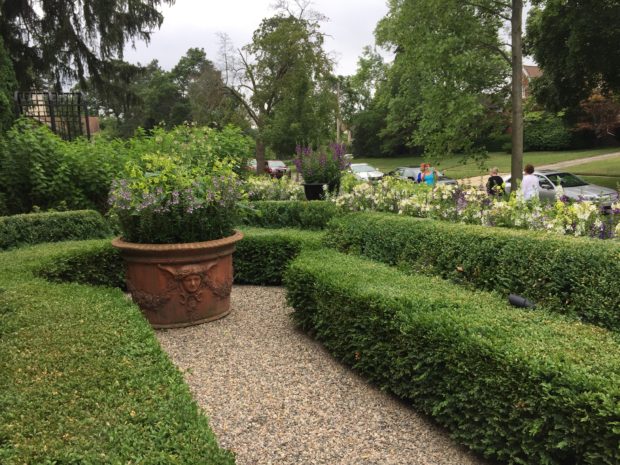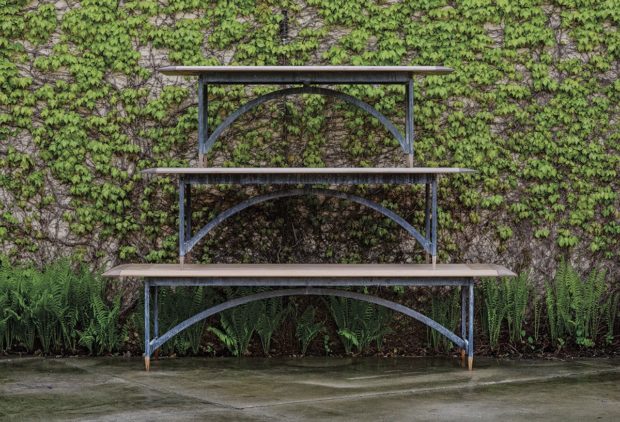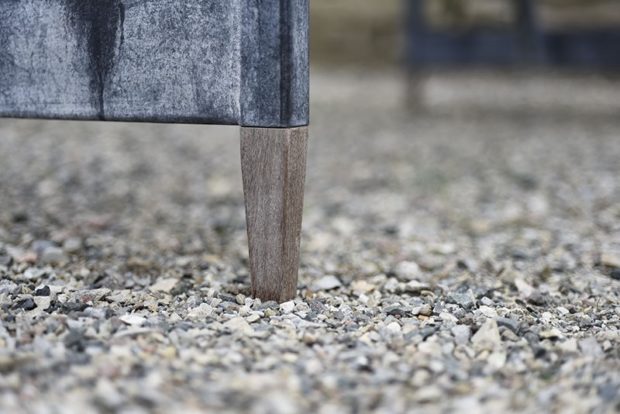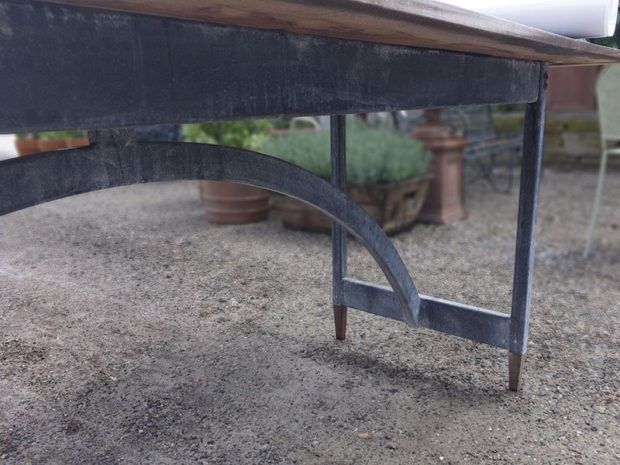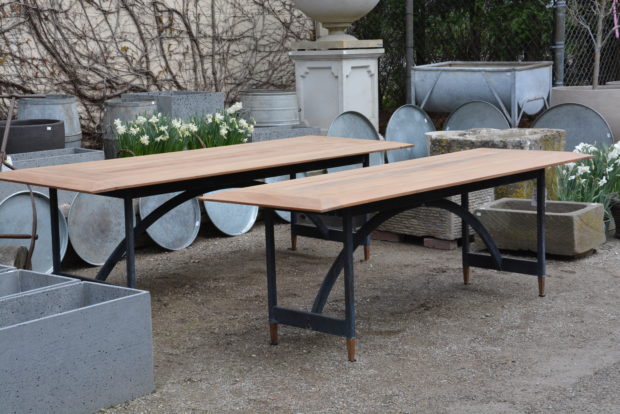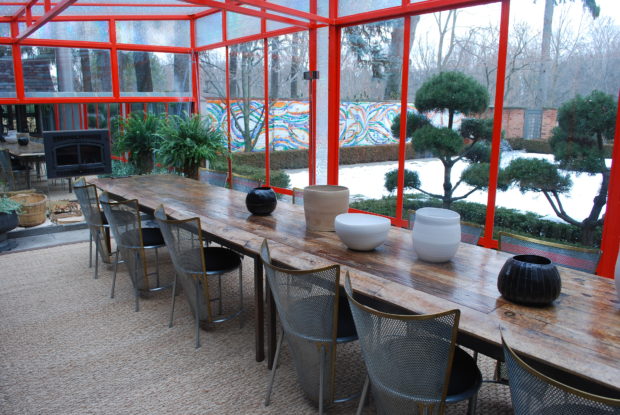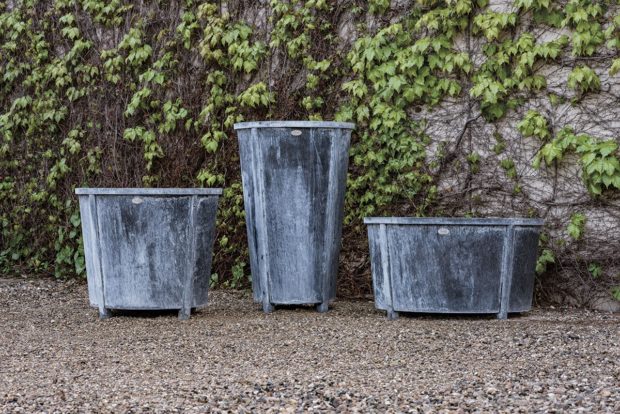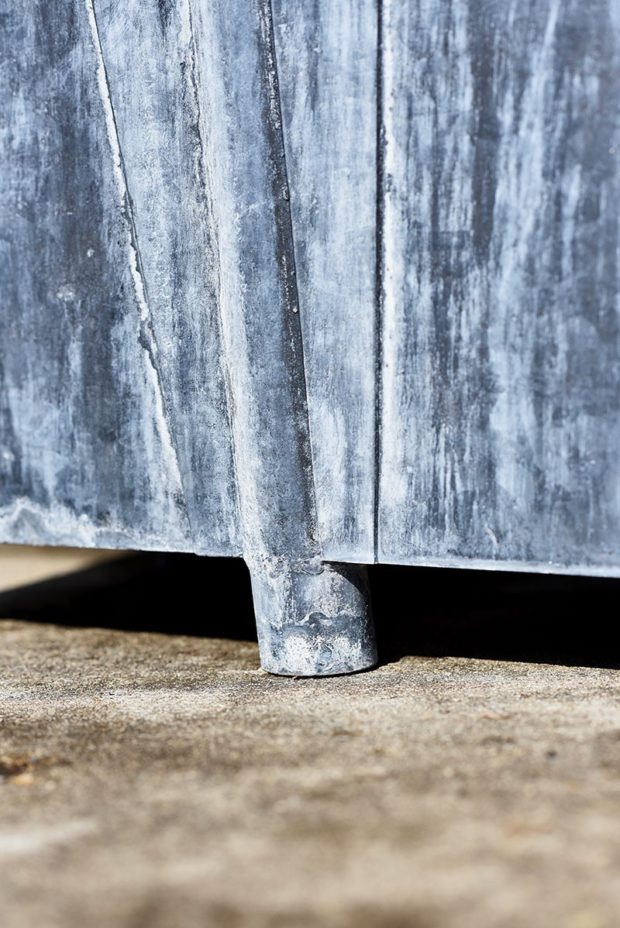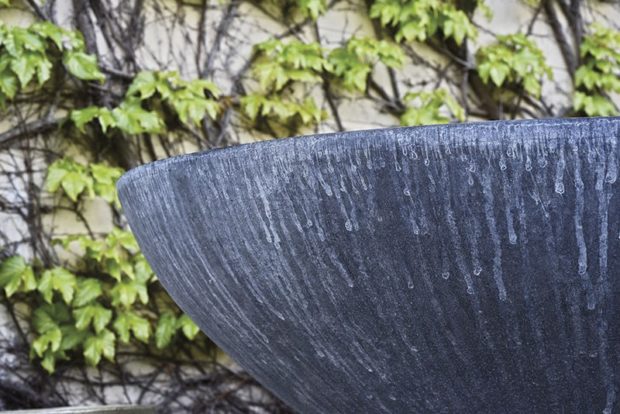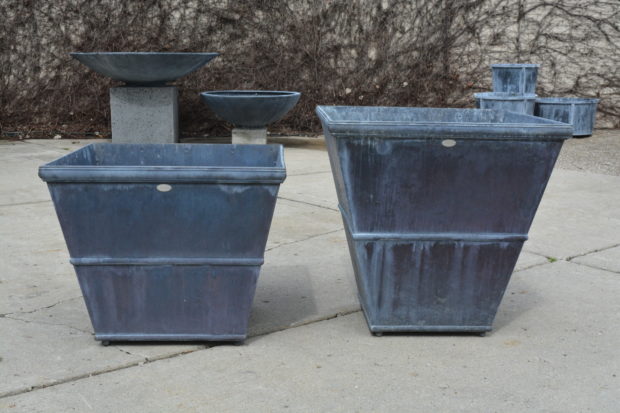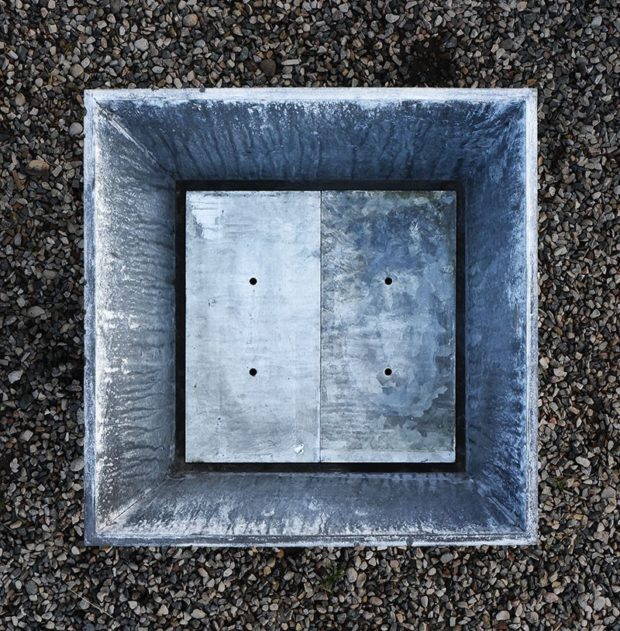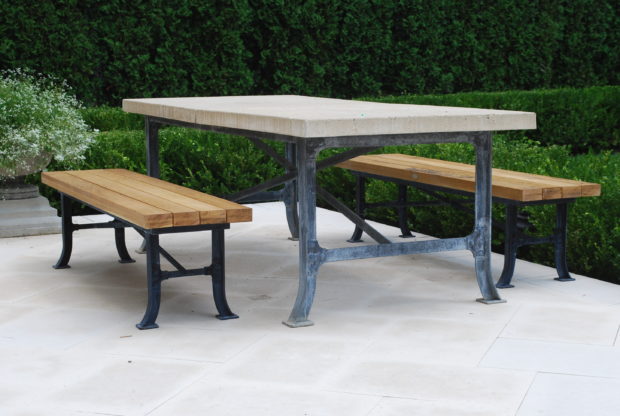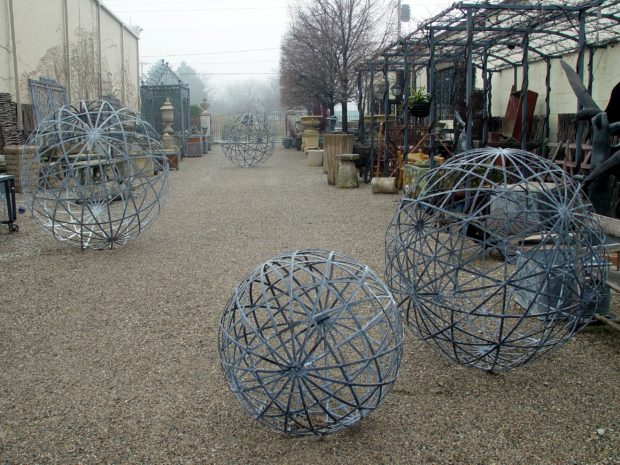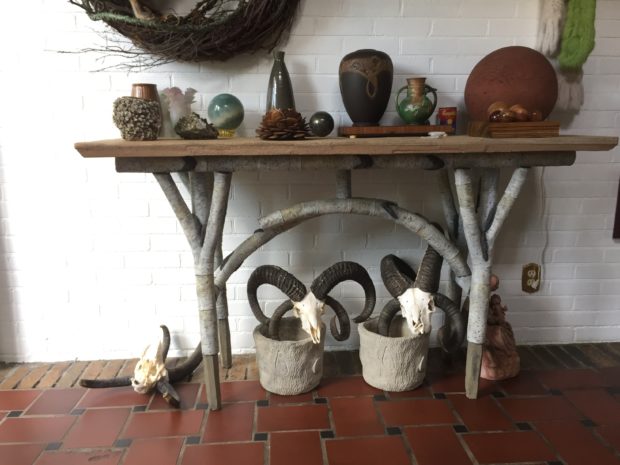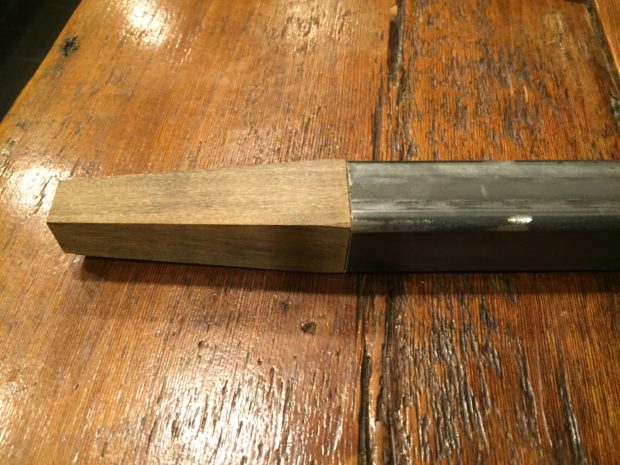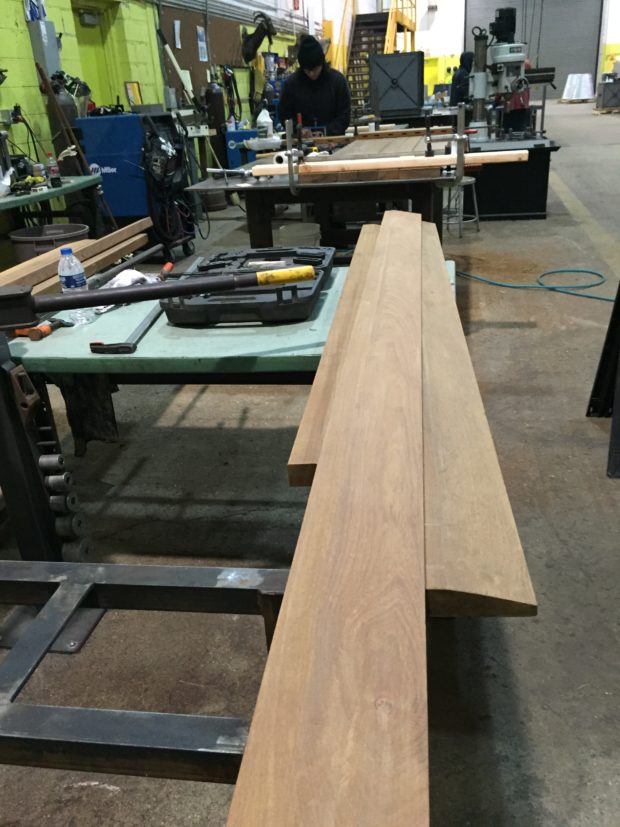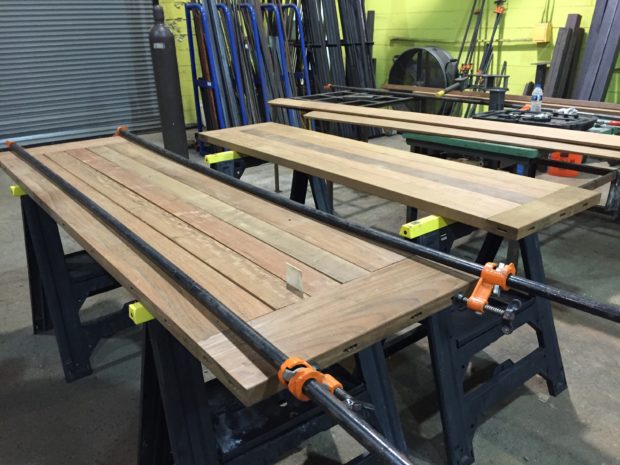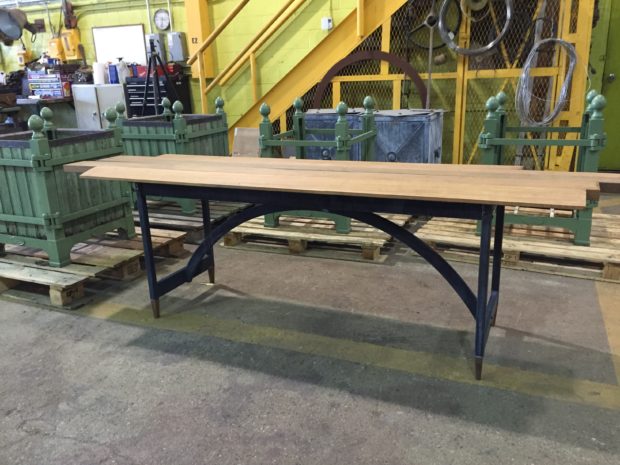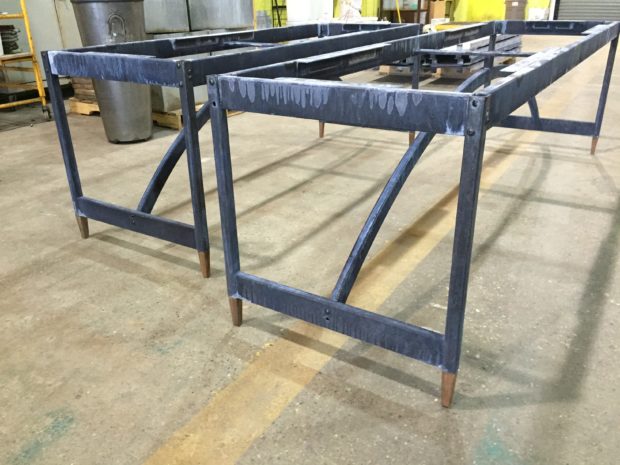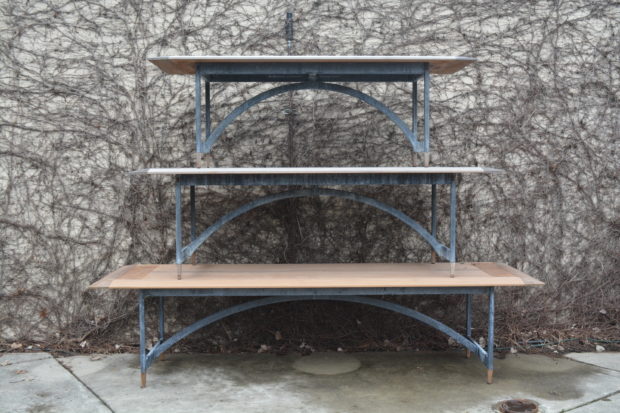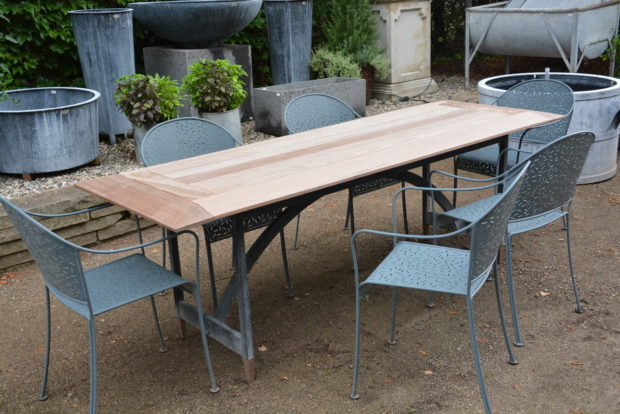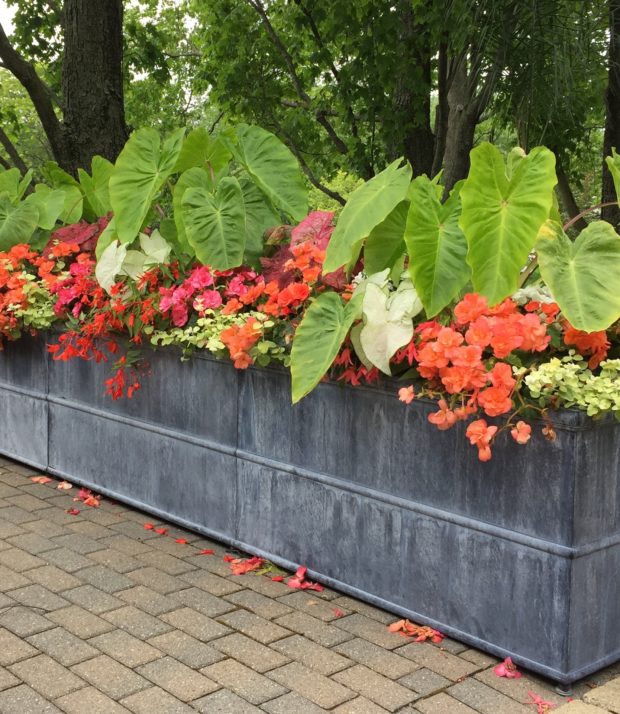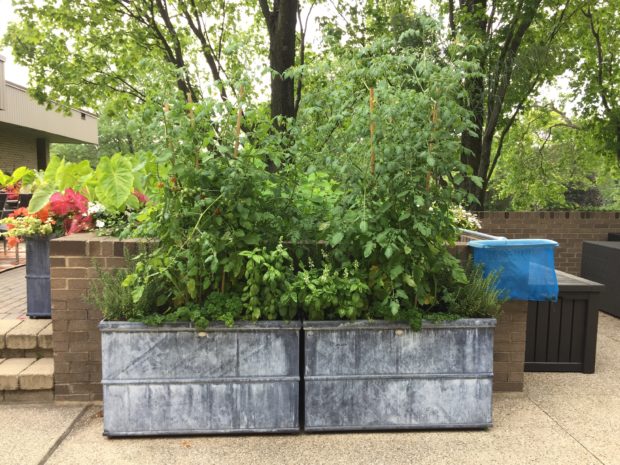 Our tenth garden cruise to benefit the Greening of Detroit was this past Sunday. As usual, I spent the day at home. My garden is on tour every year as I so enjoy meeting and talking to everyone who stops by. And I enjoy talking to those people who have taken our tour year after year, now a decade old. It is satisfying that people who have toured for years do not tire of visiting my garden. This year my garden had a few surprises. A new pair of arbors, a new fence, and 72 linear feet of planter boxes across the front, planted with summer blooming annuals. For someone who likes to plant containers as much as I do, that 72 feet worth of planting space is a treat. What fun it was to plant those! The weather forecast was perfect – 72 degrees and partly cloudy skies with a slight chance of a brief shower. Hovering over the event was my decision that this would be our last tour.
Our tenth garden cruise to benefit the Greening of Detroit was this past Sunday. As usual, I spent the day at home. My garden is on tour every year as I so enjoy meeting and talking to everyone who stops by. And I enjoy talking to those people who have taken our tour year after year, now a decade old. It is satisfying that people who have toured for years do not tire of visiting my garden. This year my garden had a few surprises. A new pair of arbors, a new fence, and 72 linear feet of planter boxes across the front, planted with summer blooming annuals. For someone who likes to plant containers as much as I do, that 72 feet worth of planting space is a treat. What fun it was to plant those! The weather forecast was perfect – 72 degrees and partly cloudy skies with a slight chance of a brief shower. Hovering over the event was my decision that this would be our last tour.
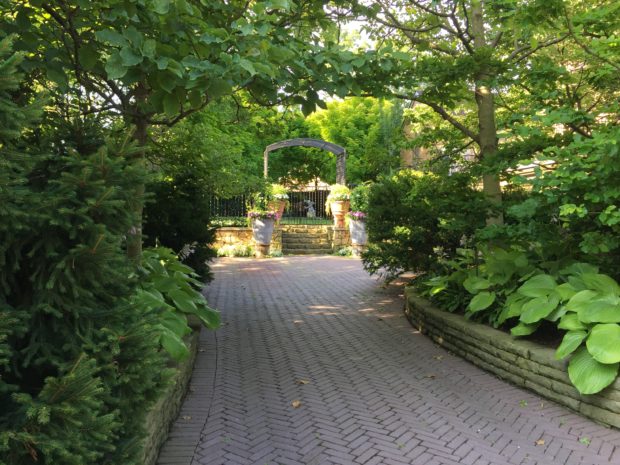 Ten years ago, encouraged and sponsored by board member and noted architect Michael Willoughby, I joined the board of the Greening of Detroit. I went to one board meeting. It would be my last; I was completely out of my depth. While I was familiar with their mission, I did not understand the issues the board had before them well enough to have anything to contribute. The next day I decided that the best contribution I could make to them would be an effort to raise money on their behalf. Putting together a tour of landscapes of my design or influenced by our group, and a dinner reception, was a commitment we were ready to make. We charged more than most tours for tickets, and all of that ticket money would go to the Greening. I do truly believe in the work done by the Greening of Detroit, so I persisted. We have kept the tour going a long time.
Ten years ago, encouraged and sponsored by board member and noted architect Michael Willoughby, I joined the board of the Greening of Detroit. I went to one board meeting. It would be my last; I was completely out of my depth. While I was familiar with their mission, I did not understand the issues the board had before them well enough to have anything to contribute. The next day I decided that the best contribution I could make to them would be an effort to raise money on their behalf. Putting together a tour of landscapes of my design or influenced by our group, and a dinner reception, was a commitment we were ready to make. We charged more than most tours for tickets, and all of that ticket money would go to the Greening. I do truly believe in the work done by the Greening of Detroit, so I persisted. We have kept the tour going a long time.
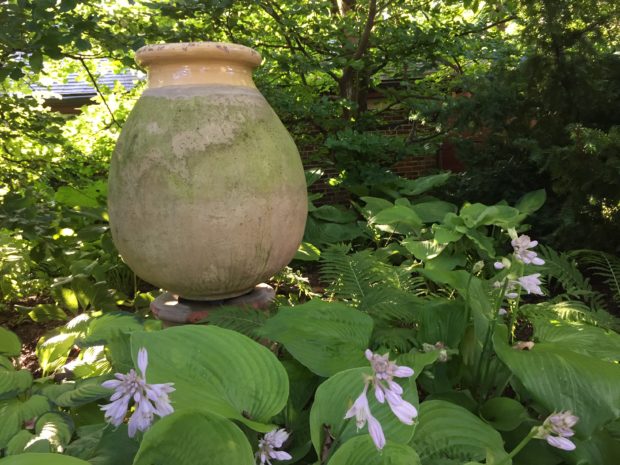 Detroit Garden Works and Deborah Silver and Company put their weight behind this tour. The shop rearranges and cleans. Rob designs the reception party. The Detroit Garden Works staff sets up tables and chairs and the bar, spanning the entire length of our driveway. They gracefully handle request for tour tickets for weeks before, and that Sunday morning beginning at 8am. They design tours for people who only have a few hours to attend. They put on a dinner reception with live music that is a perfect summer evening for those who have toured. Rob obligingly mixes up his latest version of the classic gin and tonic, and also mixes an array of unusual summer drinks. The line at his station is always long. Christine has long retired from the shop, but she does work the cruise. She handles the wine bar, as she has for the past 10 years.
Detroit Garden Works and Deborah Silver and Company put their weight behind this tour. The shop rearranges and cleans. Rob designs the reception party. The Detroit Garden Works staff sets up tables and chairs and the bar, spanning the entire length of our driveway. They gracefully handle request for tour tickets for weeks before, and that Sunday morning beginning at 8am. They design tours for people who only have a few hours to attend. They put on a dinner reception with live music that is a perfect summer evening for those who have toured. Rob obligingly mixes up his latest version of the classic gin and tonic, and also mixes an array of unusual summer drinks. The line at his station is always long. Christine has long retired from the shop, but she does work the cruise. She handles the wine bar, as she has for the past 10 years.
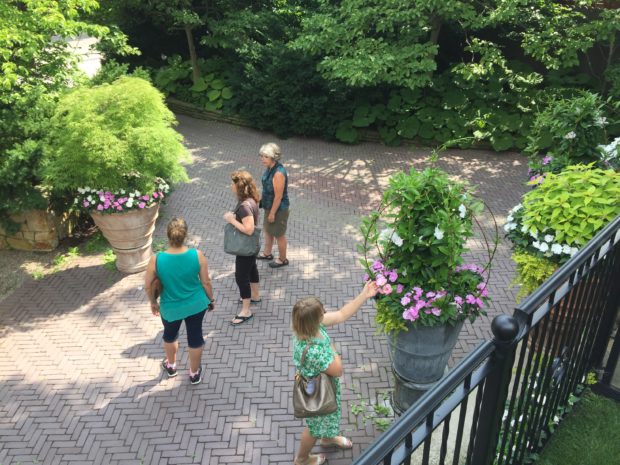 Deborah Silver and Company weeds and rakes the shop out for company. All the gardens and pots get groomed and watered. They also lend a hand to every garden on tour the week before. We weed, haul away debris and brush, water, attend to a fountain which is not working right, or any other issue that needs to be righted in time for the cruise. They prune and fluff- so every landscape and garden looks its very best. A beautiful landscape and garden is a pleasure for those who make them, and for those who experience them. The Greening of Detroit does important work – making and sustaining landscapes in our city, and teaching people how to make plants grow.
Deborah Silver and Company weeds and rakes the shop out for company. All the gardens and pots get groomed and watered. They also lend a hand to every garden on tour the week before. We weed, haul away debris and brush, water, attend to a fountain which is not working right, or any other issue that needs to be righted in time for the cruise. They prune and fluff- so every landscape and garden looks its very best. A beautiful landscape and garden is a pleasure for those who make them, and for those who experience them. The Greening of Detroit does important work – making and sustaining landscapes in our city, and teaching people how to make plants grow.
 Tour day this year was a very emotional experience for me. My original goal in 2008 was to raise 100,000 for the Greening. We went over that mark on our 9th tour, but so many friends of ours and the Greening asked if I would do a 10th tour, I said yes. The tenth year and tour would be the last. Why our last? I had done for the Greening what I had set out to do. I did not want to overstay my welcome. All things run their course, do they not? I did not want to risk people losing enthusiasm. I was not expecting what was to come.
Tour day this year was a very emotional experience for me. My original goal in 2008 was to raise 100,000 for the Greening. We went over that mark on our 9th tour, but so many friends of ours and the Greening asked if I would do a 10th tour, I said yes. The tenth year and tour would be the last. Why our last? I had done for the Greening what I had set out to do. I did not want to overstay my welcome. All things run their course, do they not? I did not want to risk people losing enthusiasm. I was not expecting what was to come.
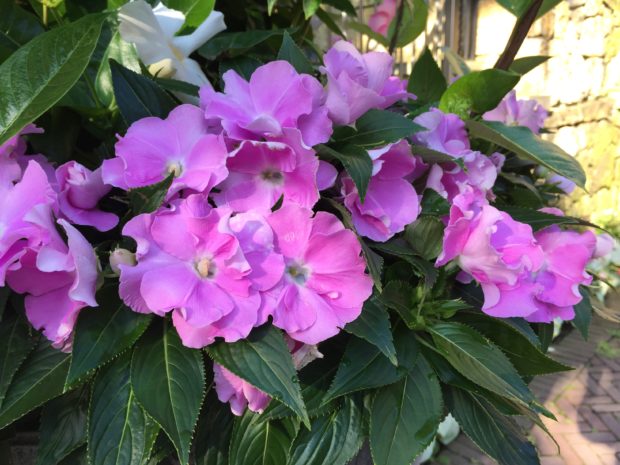 All day long, people attending the tour came up to me, and talked to me about how much the tour meant to them. About how much they learned from a conversation and exchange of ideas with garden owners. One person in particular articulated how she was able to take what she saw in other people’s gardens that she liked, and express them in her own garden. So many made a point to tell me they regretted that this would be the last tour. Many asked if I would consider continuing the tour. Some said it was the best tour of all, and they were sure next year’s tour would even be better. I was not expecting such an impassioned response.
All day long, people attending the tour came up to me, and talked to me about how much the tour meant to them. About how much they learned from a conversation and exchange of ideas with garden owners. One person in particular articulated how she was able to take what she saw in other people’s gardens that she liked, and express them in her own garden. So many made a point to tell me they regretted that this would be the last tour. Many asked if I would consider continuing the tour. Some said it was the best tour of all, and they were sure next year’s tour would even be better. I was not expecting such an impassioned response.
 Would I consider continuing the tour? Sunne has always thrown her entire weight behind this tour. Everyone who shops at Detroit Garden Works knows her. She turned out to be the founder of the 11th Garden Cruise Club. She made a point of explaining that this was the last tour, and anyone who was not happy with that should let me know. I got to the tour reception about 5:15. The first person I saw was Jennifer T, who had flown in from Seattle with her daughter to take the tour. She is a long time reader and supporter of this blog. How incredible that she took the time and handled the expense to come out for our event. Though I have read and responded to many comments she has made on these pages, it was such a treat to meet her in person. How charming that her daughter was all on board to take that trip with her Mom. Though we were only face to face for two days, I will never forget her. This tour made possible a meeting with a passionate gardener halfway across the country from me. Grateful does not express how happy I was to meet her.
Would I consider continuing the tour? Sunne has always thrown her entire weight behind this tour. Everyone who shops at Detroit Garden Works knows her. She turned out to be the founder of the 11th Garden Cruise Club. She made a point of explaining that this was the last tour, and anyone who was not happy with that should let me know. I got to the tour reception about 5:15. The first person I saw was Jennifer T, who had flown in from Seattle with her daughter to take the tour. She is a long time reader and supporter of this blog. How incredible that she took the time and handled the expense to come out for our event. Though I have read and responded to many comments she has made on these pages, it was such a treat to meet her in person. How charming that her daughter was all on board to take that trip with her Mom. Though we were only face to face for two days, I will never forget her. This tour made possible a meeting with a passionate gardener halfway across the country from me. Grateful does not express how happy I was to meet her.
 More than 125 people attended our reception. Between our companies and the Greening, we sold 385 tickets. We raised 15,650.00 for the Greening. Garden Design Magazine had some 40 new subscriptions, from which they would donate 12.00 from each to the Greening. The new President of the Greening, Lionel Bradford, attended our reception, and gave a short and heartfelt speech about his appreciation for what the tour has done for his organization. For me, a basket full of things to eat and drink-made in Detroit. Touching, this.
More than 125 people attended our reception. Between our companies and the Greening, we sold 385 tickets. We raised 15,650.00 for the Greening. Garden Design Magazine had some 40 new subscriptions, from which they would donate 12.00 from each to the Greening. The new President of the Greening, Lionel Bradford, attended our reception, and gave a short and heartfelt speech about his appreciation for what the tour has done for his organization. For me, a basket full of things to eat and drink-made in Detroit. Touching, this.
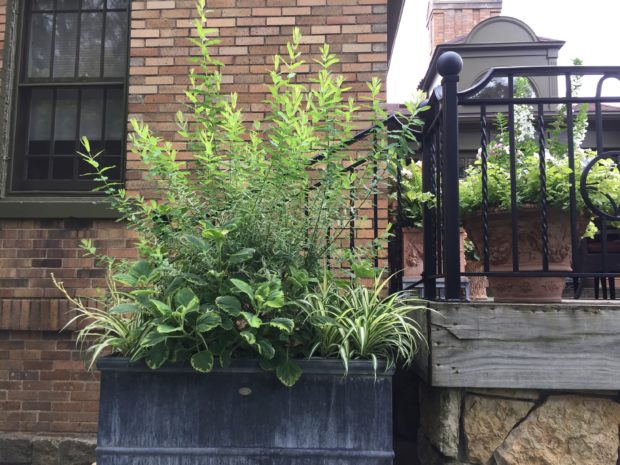 That moment was a moment I will not soon forget. Sunne has the idea that tour was just hitting its stride, and I was considering the possibility.
That moment was a moment I will not soon forget. Sunne has the idea that tour was just hitting its stride, and I was considering the possibility.
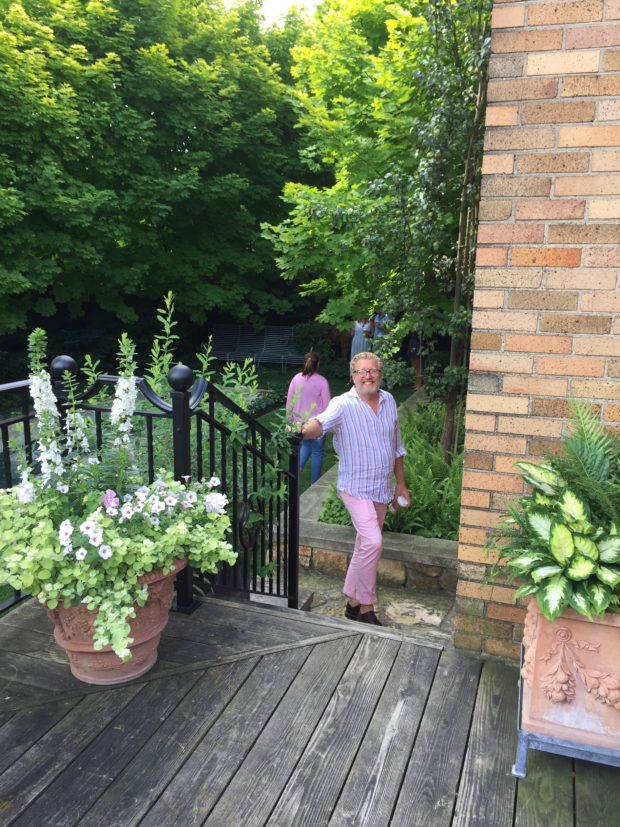 Michael on tour. For those of you too far away to have toured, to follow are more pictures of my landscape and garden from that day.
Michael on tour. For those of you too far away to have toured, to follow are more pictures of my landscape and garden from that day.
 Milo and Howard were both home for the tour this year.
Milo and Howard were both home for the tour this year.
 new planter boxes and original cast iron pots
new planter boxes and original cast iron pots
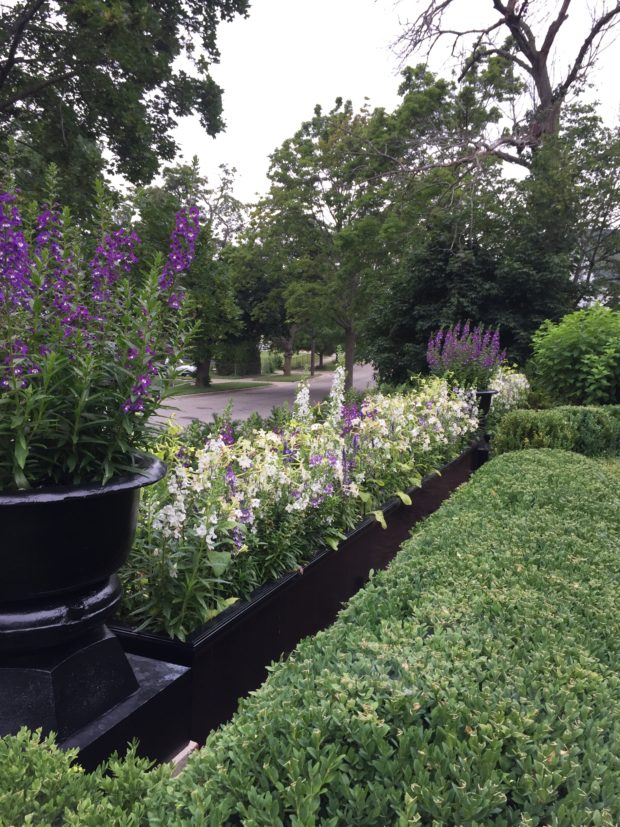 new planter boxes in the other direction
new planter boxes in the other direction
 Bringing the tour to an end is tougher now, considering all of what we heard that day. Yesterday I heard from Monica Tabares at the Greening that a donor who took the tour for the first time this year regretted this was our tenth and final tour. In a meeting with her, they pledged that if I would continue the tour for 5 more years, they would match the funds we raise every one of those five years. That offer gives me great pause. It could be that what we thought was the end is not quite the end yet.
Bringing the tour to an end is tougher now, considering all of what we heard that day. Yesterday I heard from Monica Tabares at the Greening that a donor who took the tour for the first time this year regretted this was our tenth and final tour. In a meeting with her, they pledged that if I would continue the tour for 5 more years, they would match the funds we raise every one of those five years. That offer gives me great pause. It could be that what we thought was the end is not quite the end yet.
